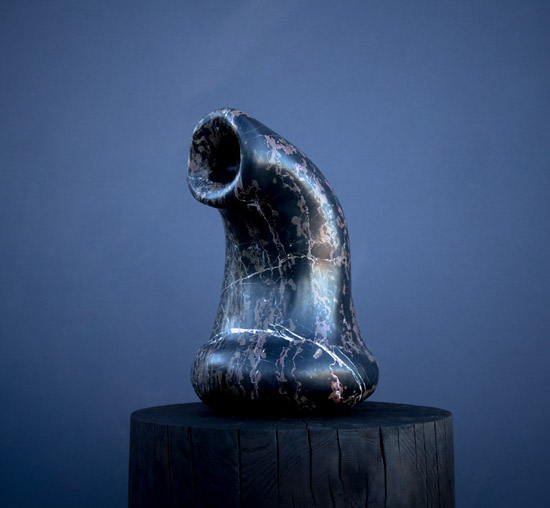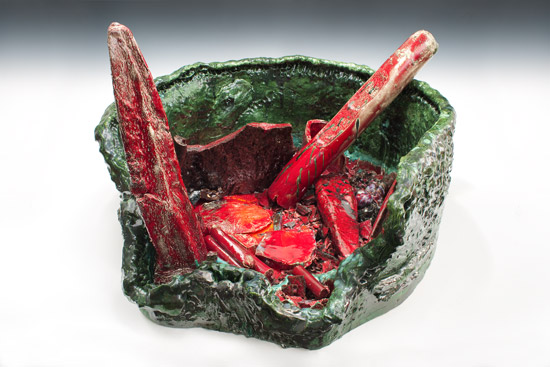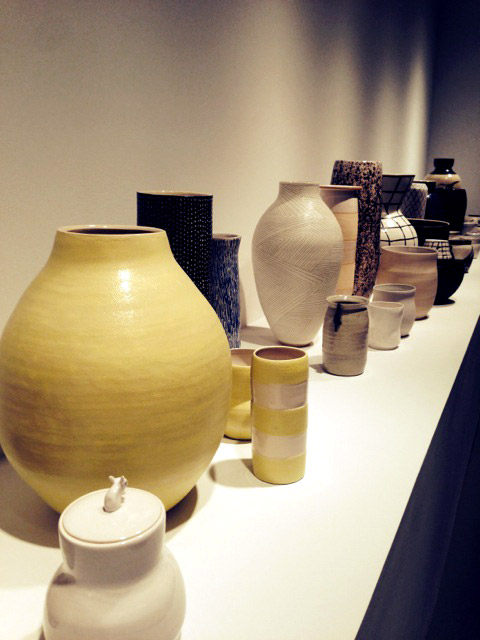“Mom, is this another art fair?” asked a kid standing in the sparse line outside the Whitney Museum.
“No, it’s the Biennial,” the mom said. “They have it every two years, that’s what biennial means.”
“Josh went on Wednesday,” the boy shot back, “and he said it’s another art fair.”
The mom closed the topic: “Josh is six.”
In 1892, Venice, Italy, mounted the first biennial artwork survey in modern times, a pluriform exhibition surveying types of art made around the world and shown in pavilions divided by country. One offshoot of this was the “Whitney Annual” that in 1932 began surveying American sculpture and then painting in alternating years.
In 1973, this painting/sculpture division was considered archaic—or they eliminated painting, depending upon to whom you speak—and the forms of art were merged into the Whitney Biennial of American Art, becoming one of the world’s biggest and awaited art shows. Typically the Biennial announced a new generation of artists and, hopefully, a sound direction for contemporary art thinking. The work was packed in and often in conflict with work nearby, but usually the curators provided some theme that resolved it.
Julian Bell referred to art as the “mirror of the world,” a seminal description of this activity found in every civilization, which typically portrays each culture’s respective idealism. But as skepticism became the centerpiece of American arts and humanities, the reflection returned by the Whitney Biennial became strident, political, and screwy looking. The hateful critical response to this institution grew so predictable that its nickname became “the show you love to hate,” and the museum gained the street name of “The Witless.”
Enter the art fair spectacle. The art fair is a fairly recent addition to the contemporary art scene, having appeared about 20 years ago as a clearinghouse for contemporary work of lesser quality, often the previous season’s leftovers that could be gained at a bargain price. Its callow mob scene was considered antithetical to the monastic atmosphere previously used as a setting for contemporary art.
But as art became increasingly associated with money and the fairs multiplied in number, this circus displaced the random art gallery as the primary venue to view and purchase art. As the fairs became more sophisticated, they began to resemble the cluttered Whitney Biennial. Now the Biennial has returned the favor and mounted just another art fair, as any 6-year-old can see.
For reasons that made sense to somebody, this Biennial, the last one in the building before the museum relocates, has three curators working separately without any crosstalk and all three installed their own art world survey on an individual floor. The curators are: Stuart Comer from MoMA, where he is the chief curator of media and performance; Anthony Elms, an associate curator from the Institute of Contemporary Art in Philadelphia; and Michelle Grabner, a professor of painting and drawing at the Art Institute of Chicago.
In their defense, the three curators and the Whitney Museum cannot compete with the money and staff of several hundred commercial galleries gathering many times a year. If Art Basel Miami Beach is the "Super Bowl of art fairs," then the Whitney Biennial has been sent back to the minors, an inter-collegiate playoff.
Michelle Grabner describes her curated floor as a pedagogy or curriculum, an off-putting title suggesting that this Chicago art teacher apparently sees the rest of us as students, claiming for herself a role in which she is comfortable. That clumsy self-defense mechanism aside, she did the best job of the three curators, with a floor featuring half of the total number of artists in the entire Biennial.
Similar to an art fair, there is no theme here, but there are plenty of things on which to dwell. A good entry is from Alma Allen, an outsider artist working in the desert of Joshua Tree, CA, in the spirit of the pure forms of the Romanian Constantin Brancusi. He is not part of any art movement and his work is typical of art found in small town galleries, often in tourist areas. High on pleasure and low on theory, it’s strong work and Grabner was brave and smart to include it; albeit with the Whitney Biennial stamped on his forehead I doubt Allen is an outsider for much longer.
.

"Untitled" by Alma Allen, 2013. Marble sculpture on an oak pedestal, 25 x 20 x 14 in. Courtesy of the artist.
.
Another group of work on this floor that caught my eye was the compelling ceramic vessels by Sterling Ruby entitled “Basin Theology.” These large ceramic tubs are “filled with remnants of earlier works that (blew) up during firing.” Oh, that is good: make work out of all the work that didn’t make it; talk about the mirror of the world. Perfect, Mr. Ruby.
.

"Basin Theology/Butterfly Wreck" by Sterling Ruby, 2013. Ceramic, 28 1/8 x 39 3/8 x 41 inches. Copyright Sterling Ruby. Photographer: Robert Wedemeyer.
.
Stefan Stux said three years ago that there was going to be a movement of ceramic art into the contemporary art world, a statement sounding farfetched at the time, but here it is on every floor, by all three curators. Don’t bet against Stefan Stux.
.

Ceramic art everywhere in the show.
.
Ms. Grabner also included, surprisingly, scattered notes of the late David Foster Wallace, whose 2005 commencement speech (a throwaway literary form if ever there was one) at Kenyon College, “This Is Water,” became a cult writing of insight and empathy. If you have not read it you should stop what you are doing and do so now. It was difficult to get close to Wallace’s notes because it was the hit piece on the floor, and a writer was three deep at any moment squinting at Wallace’s smallish handwriting. Yes, this is water, and he is missed.
“'Course I'm respectable,” said Noah Cross in the movie “Chinatown.” "Politicians, ugly buildings, and whores all get respectable if they last long enough." And so has chilly ’70s conceptual art that makes an odd reappearance on the second and third floors curated by Mr. Elms and Mr. Comer.
This is the cold front that settled on the art world before the resurgence of expression, and the sudden appearance of an actual audience, in the early ’80s. The first requirement of this academism is that it be uglier than a mud fence, secondly it must be inflated with pompous verbiage to explain why it’s important. An exaggeration? Here is the Whitney wall label for one such piece:
"These voyeuristic and intimate chronicles highlight how technologies of representation suspend us within systems of watching and being watched that are simultaneously habitual, desirous, and coercive."
A high school English class might translate this as “Dude, I just took your picture.”
A welcome originality included in the Biennial is an installation one would not see in an art fair: Zoe Leonard’s room-sized 945 Madison Avenue (2014) camera obscura. Leonard uses a Whitney side window to naturally project a live image of the view outside into a large darkened room. It’s a clever and peaceful art form and an obvious crowd pleaser, given the number of people smiling inside the room.
Special hat tip to the Canadian artist who calls himself “Paul P.” His sepia gouache pen drawings of sleeping youngsters was a pleasant surprise, uniquely engaging and radiating beauty. These were done in situ at the Metropolitan Museum of Art based upon other works in view. Their installation near the aforementioned vapid information art underlined how beauty is simply more important.
There are enough individual works here to make a trip to the Whitney Biennial worthwhile. As an assemblage of lots of art in one place it’s a rewarding one, but of little lasting import as a curatorial event. Very much like an art fair.
BASIC FACTS: The 2014 Whitney Biennial will be held from March 7 to May 25, 2014 at The Whitney Museum of American Art, 945 Madison Avenue at 75th Street, New York, NY. www.whitney.org.
RELATED: "2014 Whitney Biennial Changes the Game".
_______________________
Copyright 2014 Hamptons Art Hub LLC. All rights reserved.
